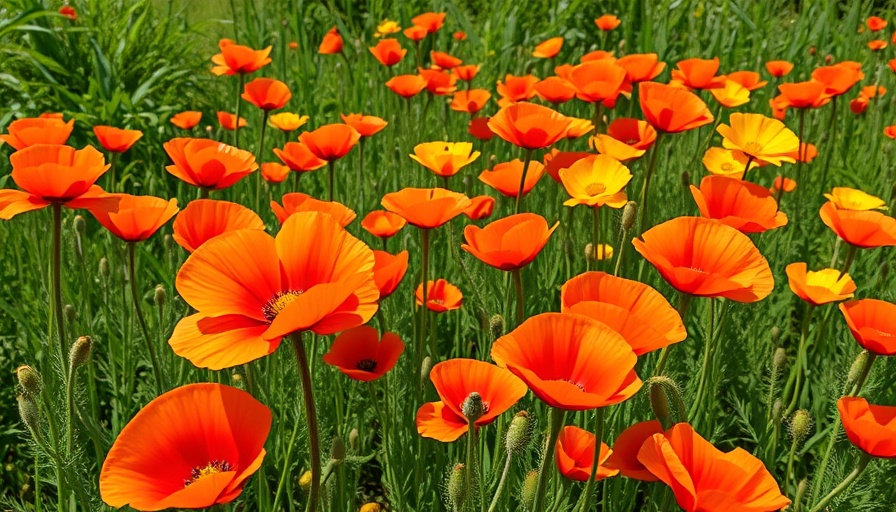
Why Fall Is the Secret Season for Sowings
One of the most misunderstood aspects of gardening is the value of timing, especially when it comes to sowing seeds. While spring is typically hailed as the prime season for planting, savvy gardeners know that fall provides a golden opportunity to establish a thriving spring bloom. The cooler temperatures and increasing rainfall conditions create an ideal environment for seeds to lie dormant during winter, developing a robust root system that will spring to life when the temperatures rise.
Understanding Your Garden Climate
Before embarking on your fall sowing journey, it’s crucial to assess your specific climate conditions. Gardeners should reference the USDA plant hardiness zone map to comprehend their local environment—this involves understanding everything from average winter temperatures to the critical frost dates. Knowing these factors can dramatically influence which seeds will thrive. For example, California poppies are well-suited for warmer climates, while love-in-a-mist can thrive in a more temperate environment.
Top Seeds to Consider for Fall Sowing
Now, let’s get to the heart of the matter: which seeds are truly the standouts for planting in the fall? Here are some of the best choices:
- California Poppy: Known as California’s state flower, California poppies are vibrant and drought-resistant, making them a beloved choice for many gardeners. When direct-sowing these seeds, scatter them on the soil surface in a sunny, well-draining spot.
- Love-in-a-Mist: With delicate, feathery foliage and stunning blue flowers, this annual is self-seeding and offers striking seed heads that add visual interest to dried arrangements.
- Icelandic Poppies: These cold-loving perennials produce beautiful blooms that can adapt well to various climates, offering a burst of color when spring arrives.
Making the Most of Your Planting
The buzz around fall sowing is not just in the seedlings that come forth but also in the cost-effectiveness of the process. Investing in seed packets proves far more economical compared to buying nursery-grown plants. To begin, prepare your soil by removing any weeds and enriching it with organic compost. Once the soil is adequately ready, follow the designated guidelines on your seed packets for depth and spacing, and gently water them to ensure a stable environment for germination.
Actionable Insights for Successful Gardening
Understanding the cyclical nature of planting can transform your approach to gardening. Here are a few tips for success:
- Keep a gardening journal to track your plantings, noting the conditions and outcomes.
- Be observant of local wildlife; pollinators are often more abundant in fall, which can influence the flowering of your seeds.
- Consider incorporating mulching to retain moisture and protect seeds during the winter months.
Looking Ahead: Future Gardening Trends
As more gardeners embrace sustainable practices, fall sowing is likely to see an uptick in popularity. With a focus on biodiversity, more selections of native plant seeds will emerge in the market, allowing for eco-friendliness and attracting beneficial pollinators to your garden. This connection between gardening practices and environmental stewardship presents an exciting future where gardeners not only cultivate beauty but also contribute to ecological health.
Your Gardening Project Awaits
As you gear up to sow in the fall and anticipate a vibrant spring bloom, remember that gardening can be as much about individual expression as it is about nurturing nature. Dive into your planting adventure with confidence, knowing that your efforts today yield beauty tomorrow.
Ready to transform your outdoor space into a blossoming haven? Explore more insights and expert tips at ProHomeGuides for your next home gardening project!
 Add Row
Add Row  Add
Add 




Write A Comment